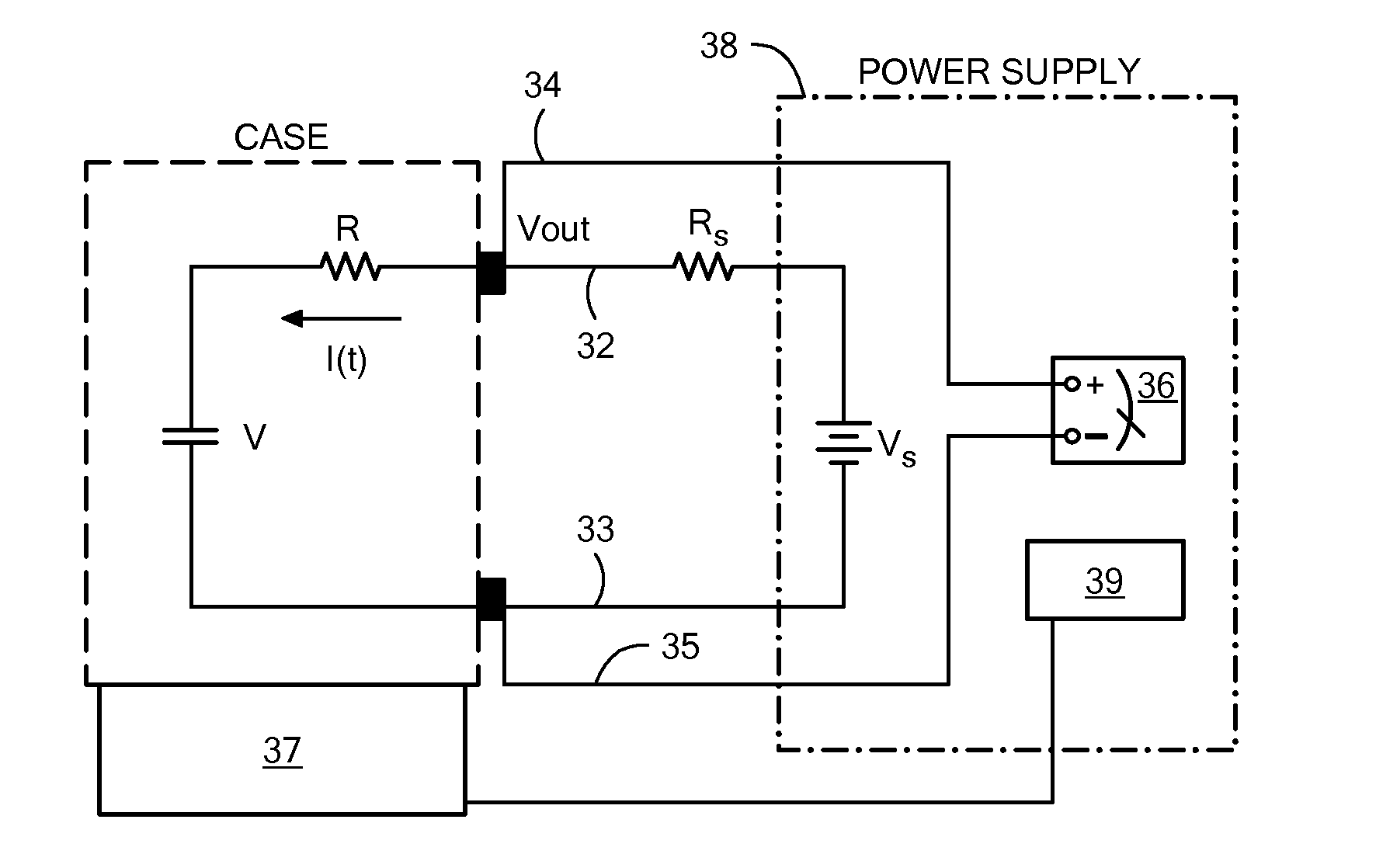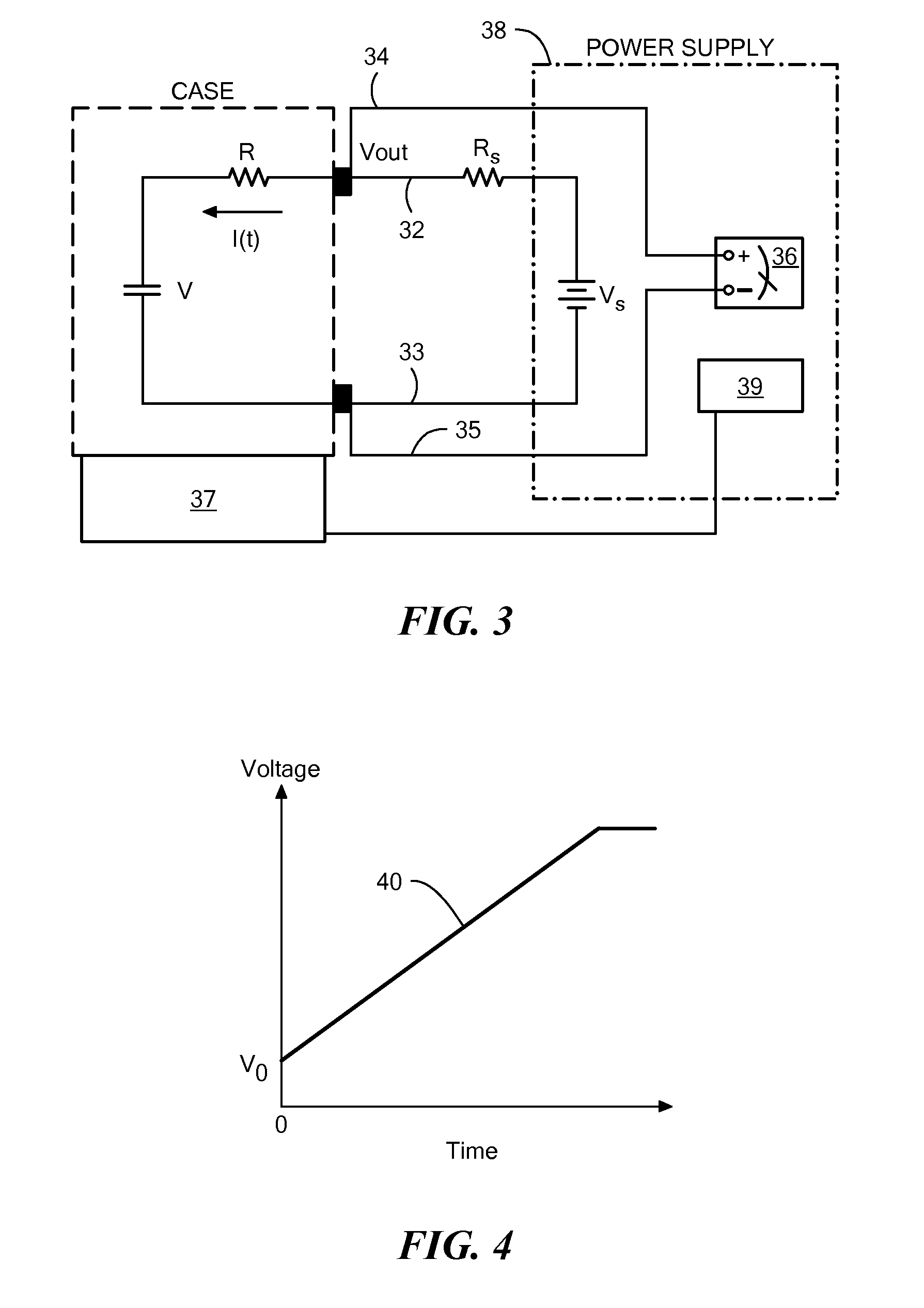Apparatus and Method for Rapidly Charging Batteries
a lithium ion battery and charging apparatus technology, applied in secondary cell servicing/maintenance, analogue processes for specific applications, instruments, etc., can solve the problems of reverse charging, cell damage caused by reverse charging, and battery performance degradation
- Summary
- Abstract
- Description
- Claims
- Application Information
AI Technical Summary
Benefits of technology
Problems solved by technology
Method used
Image
Examples
Embodiment Construction
[0010]In accordance with embodiments of the present invention, an apparatus is provided for charging a battery. The apparatus has an interface for electrical coupling to the battery and circuitry for concurrently measuring battery voltage and current. Additionally, the apparatus has a database for accumulating battery parameter data from a plurality of batteries, and a processor for recursively updating data characterizing a model representing the battery based both on jointly measured battery voltage and current and accumulated parameter data received from the database. Finally, the apparatus has a current supply (as defined herein) for supplying current for charging the battery as governed by the processor.
[0011]In other embodiments of the invention, the processor may be adapted for updating a dynamic representation of cell dynamics for the battery based at least in part upon system identification, or upon nonlinear system identification.
[0012]In alternate embodiments, the circuit...
PUM
 Login to View More
Login to View More Abstract
Description
Claims
Application Information
 Login to View More
Login to View More - R&D
- Intellectual Property
- Life Sciences
- Materials
- Tech Scout
- Unparalleled Data Quality
- Higher Quality Content
- 60% Fewer Hallucinations
Browse by: Latest US Patents, China's latest patents, Technical Efficacy Thesaurus, Application Domain, Technology Topic, Popular Technical Reports.
© 2025 PatSnap. All rights reserved.Legal|Privacy policy|Modern Slavery Act Transparency Statement|Sitemap|About US| Contact US: help@patsnap.com



